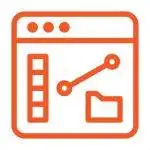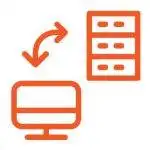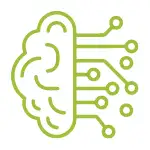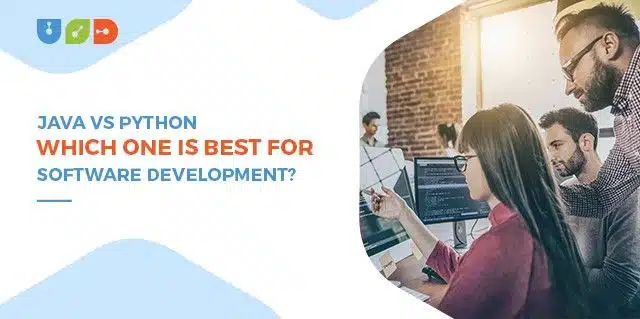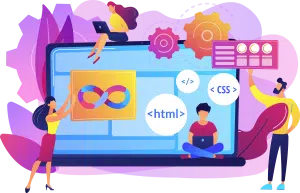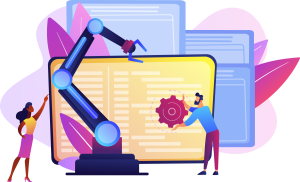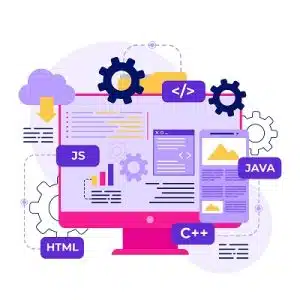Table of Contents
ToggleAs the world moves toward a digital future, the problem usually arises with not the lack of tech stack but its abundance. More people use search queries to clear out confusion like ‘Java vs JavaScript,’ ‘Kotlin vs Java,’ and ‘C++ vs Java.’ Therefore, we will compare Java vs Python and discuss the key differences and strengths. We aim to find which one is best for software development, be it a mobile app, web app, or enterprise solution. But before we proceed, we must explain the meaning and uses of Java and JavaScript for beginners.
What is Java?
Java is a high-level, object-oriented programming language developed by Sun Microsystems in the mid-1990s and currently owned by Oracle Corporation. It was designed to be platform-independent, and its “write once, run anywhere” (WORA) philosophy allows developers to write code once and run it anywhere. Java achieves platform independence through its bytecode compilation model, where Java source code is compiled into bytecode, which can then be executed on any device with a Java Virtual Machine (JVM). Key features of Java include:
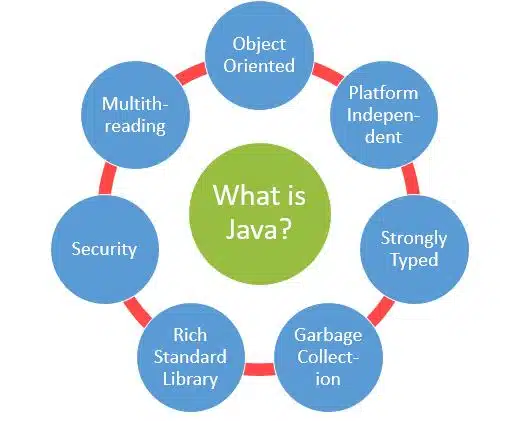
1. Object-Oriented
Java is based on the object-oriented programming (OOP) paradigm, allowing developers to create modular and reusable code through the use of classes and objects.
2. Platform-Independent
Java programs can run on any device with a JVM, including computers, servers, mobile devices, and embedded systems, without requiring recompilation.
3. Strongly Typed
Java is a strongly typed language, meaning that all variables must be declared with a specific data type, and type checking is performed at compile time.
4. Garbage Collection
Java features automatic memory management through garbage collection, which automatically deallocates memory used by objects that are no longer in use, reducing the risk of memory leaks and memory-related errors.
5. Rich Standard Library
Java comes with a comprehensive standard library (Java API) that provides built-in support for common tasks such as input/output operations, networking, threading, and data structures.
6. Security
Java incorporates built-in security features, such as bytecode verification, sandboxing, and access control mechanisms, to ensure the safety and integrity of Java applications.
7. Multithreading
Java supports multithreading, allowing developers to create concurrent and parallel applications that can execute multiple tasks simultaneously.
What is Java used for?
Java is a versatile programming language used for a wide range of applications across various domains. Some common uses of Java include:
1. Web Development
It helps to build dynamic and interactive web applications, including enterprise-level websites, e-commerce platforms, and content management systems. Frameworks such as Spring MVC, JavaServer Faces (JSF), and Apache Struts are most suitable for Java web development.
2. Mobile App Development
Java is the primary choice of programmers for developing Android applications. Android Studio, the official Integrated Development Environment (IDE) for Android app development, uses Java as its primary language for coding.
3. Desktop Applications
Java assists in creating desktop applications with graphical user interfaces (GUIs). JavaFX and Swing are two popular libraries for building desktop applications with Java. They provide supportive features such as rich UI components, animations, and multimedia support.
4. Enterprise Software
Java is also suitable for building large-scale enterprise software systems. The list comprises customer relationship management (CRM) software, enterprise resource planning (ERP) systems, Healthcare, and Fintech applications. Java’s robustness, scalability, and portability make it a popular choice for mission-critical enterprise applications.
5. Big Data Processing
Java is widely famous in big data processing frameworks such as Apache Hadoop and Apache Spark. These frameworks leverage Java’s scalability and parallel processing capabilities to analyze large volumes of data distributed across clusters of computers.
6. Internet of Things (IoT Systems)
It enables IoT applications to connect and control smart devices, sensors, and actuators. The Java Platform, Micro Edition (Java ME) provides a lightweight runtime environment for running Java applications on embedded devices with limited resources.
7. Game Development
Java is perfect for developing video games and game engines. Libraries such as LibGDX and jMonkeyEngine allow developers to create cross-platform games with Java, supporting desktop, web, and mobile platforms.
8. Scientific Computing
Java is used for scientific computing and numerical analysis, with libraries such as Apache Commons Math and JScience. They provide support for mathematical calculations, statistics, and simulations.
What is Python?
Python is a complex, interpreted programming language known for its readability, simplicity, and versatility. Created and released by Guido van Rossum in 1991, Python became one of the most prevalent programming languages. It is common across various fields, such as web development, data science, machine learning, scientific computing, artificial intelligence, and automation.
Key features of Python include:
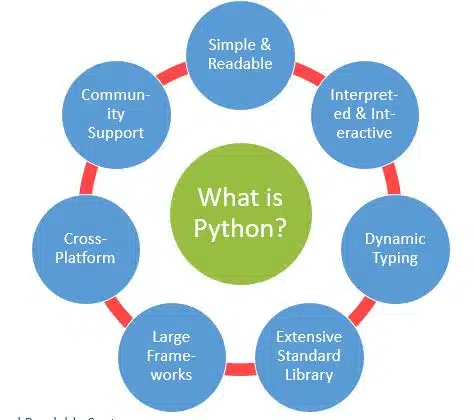
1. Simple and Readable Syntax
Python’s syntax is designed to be simple, intuitive, and easy to read, making it accessible to beginners and experienced programmers alike. Its clean and concise syntax reduces the need for excessive boilerplate code, promoting code readability and maintainability.
2. Interpreted and Interactive
Python is an interpreted language, meaning that Python code is executed line by line by the Python interpreter without the need for compilation. It allows for quick prototyping, interactive development, and rapid feedback, making Python ideal for iterative development and experimentation.
3. Dynamic Typing
Python is dynamically typed, meaning that variable types are determined at runtime rather than being explicitly declared in the code. This flexibility simplifies coding and allows for more expressive and concise programming.
4. Extensive Standard Library
Python comes with a comprehensive standard library that provides built-in support for a wide range of tasks, including file I/O, networking, data manipulation, regular expressions, and more. The standard library allows developers to accomplish common programming tasks without having to rely on third-party libraries.
5. Large Ecosystem of Libraries and Frameworks
Python has a vast and thriving ecosystem of third-party libraries and frameworks that extend its capabilities and enable developers to build a wide range of applications. Popular libraries and frameworks include NumPy and pandas for data analysis, TensorFlow and PyTorch for machine learning, Django and Flask for web development, and many others.
6. Cross-Platform Compatibility
Python is cross-platform compatible, meaning that Python code can run on various operating systems, including Windows, macOS, and Linux, without modification. This portability makes Python a versatile choice for developing applications that need to run on different platforms.
7. Community and Support
Python has a large and active community of developers who contribute to its development, create open-source projects, share knowledge, and provide support through forums, online communities, and documentation. The Python community fosters collaboration, learning, and innovation, making it a welcoming language for newcomers and experienced developers alike.
What is Python Used for?
Python is a versatile programming language empowering various domains with a wide range of applications. Some common uses of Python are:
1. Web Development
Python is used for building websites and web applications, both on the server side and on the client side. Frameworks like Django and Flask are popular choices for developing web apps, providing tools and libraries for handling routing, authentication, and database interactions.
2. Data Science and Machine Learning
Python is the favorite language for machine learning and data science jobs. Libraries like NumPy, pandas, SciPy, and sci-kit-learn are widely used for data manipulation, analysis, and machine learning model development. Python’s simplicity and readability make it well-suited for exploring and visualizing data, as well as building and deploying machine learning models.
3. Scientific Computing
Python is used for scientific computing and numerical analysis in various fields, such as physics, engineering, biology, and finance. Libraries like SciPy, SymPy, and Matplotlib provide tools for solving mathematical problems, simulating physical systems, and visualizing scientific data.
4. Automation and Scripting
It enables automation and scripting to replace repetitive tasks. Its simple syntax and extensive standard library make it an ideal choice for writing scripts to automate tasks such as file manipulation, data processing, system administration, and more.
5. Artificial Intelligence (AI) and Natural Language Processing (NLP)
Python shines in AI and NLP applications for tasks such as speech recognition, text analysis, language translation, and chatbots. Libraries like TensorFlow, PyTorch, Keras, and NLTK provide tools and algorithms for building and training AI models.
6. Web Scraping
Python is best for web scraping, which involves extracting data from websites. Libraries like BeautifulSoup and Scrapy make it easy to scrape web pages, parse HTML/XML documents and extract structured data for analysis or storage.
7. Game Development
Python is ideal for developing video games and game engines. Libraries like Pygame provide tools for creating 2D games, while engines like Panda3D and Unity support 3D game development with Python scripting.
8. Desktop GUI Applications
Python is convenient for building desktop applications with graphical user interfaces (GUIs). Frameworks like Tkinter, PyQt, and wxPython allow developers to create cross-platform desktop applications with rich UIs.
9. Internet of Things (IoT)
Python empowers IoT applications for connecting and controlling smart devices, sensors, and actuators. Its simplicity and versatility make it well-suited for developing IoT solutions that interact with the physical world.
Java vs Python: A Never Ending Debate
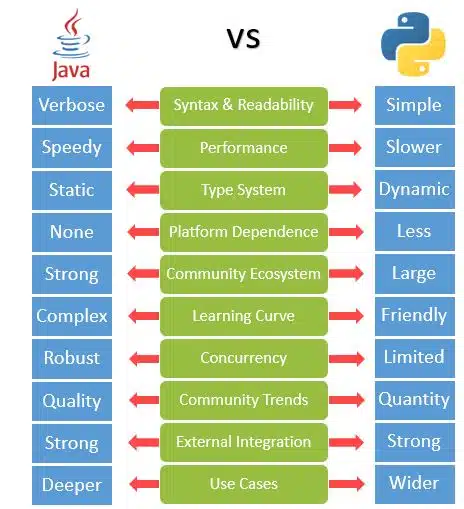
Comparing Java and Python involves understanding their respective strengths, weaknesses, and ideal use cases. Here’s a breakdown of how they differ in various aspects:
1. Syntax and Readability
Python is famous for its simple and concise syntax, which emphasizes readability and ease of use. Its code is often more compact and expressive compared to Java.
Java has a more verbose syntax compared to Python, with explicit declarations and semicolons. While it may require more lines of code for certain tasks, Java’s syntax is structured and easy to understand for developers.
2. Performance
Python is generally slower in terms of performance compared to Java, especially for CPU-intensive tasks. Python’s interpreted nature and dynamic typing can result in overheads.
Java is known for its performance and speed, compiled nature, and statically typed variables, which contribute to faster execution times and make it suitable for performance-critical apps.
3. Type System
Python is dynamically typed, meaning variable types are determined at runtime. Python allows for more flexibility and agility in coding but may lead to potential runtime errors.
Java is statically typed, requiring explicit declaration of variable types. Java’s strong type system helps catch errors during compilation, leading to more robust and reliable code.
4. Platform Independence
Python is lesser platform-dependent compared to Java. While Python code can run on various platforms, it’s not as seamless as Java’s “write once, run anywhere” approach.
Java is popular for its platform independence, thanks to the Java Virtual Machine (JVM). Java bytecode can run on any device with a JVM installed, making it highly portable and suitable for cross-platform development.
5. Community and Ecosystem
Python boasts a large and active community of developers, contributing to a vast ecosystem of libraries and frameworks. Python’s ecosystem is known for its versatility, particularly in data science, machine learning, and web development.
Similarly, Java has a strong and established community with a rich ecosystem of libraries, frameworks, and tools. Java’s ecosystem is well-suited for enterprise IT solution design, with robust frameworks like Spring and Hibernate.
6. Learning Curve
Python is known for its beginner-friendly nature, and it is often recommended as a first programming language for beginners due to its simple syntax and readability. It’s easier to grasp concepts and get started with Python programming.
While Java’s syntax may be more verbose compared to Python, it offers strong static typing and explicit declarations, which can be beneficial for learning fundamental programming concepts such as data types, variables, and object-oriented principles.
7. Concurrency and Parallelism
Historically, Python’s Global Interpreter Lock (GIL) has limited its ability to utilize multiple CPU cores for parallel processing effectively. However, libraries like Multiprocessing and Asyncio provide solutions for concurrency and asynchronous programming.
Java offers robust support for multithreading and concurrency with features like thread management, synchronization, and Java.util.concurrent package. Java’s concurrency utilities make it well-suited for developing scalable and concurrent applications.
8. Community Trends and Adoption
Python has experienced significant growth in recent years, driven by its popularity in fields such as data science, machine learning, and web development. The Python community continues to expand, with increasing adoption in various industries and domains.
Java remains a cornerstone of enterprise IT solution design and is widely used in industries such as finance, healthcare, and telecommunications. While its growth may not be as rapid as Python’s, Java maintains a strong presence in the software development landscape.
9. Integration with Other Technologies
Python is famous for its seamless integration with other technologies and languages. It can easily interface with C/C++ libraries through tools like Ctypes and Cython, enabling high-performance computing and system-level interactions.
Java’s robust ecosystem and mature tooling make it well-integrated with enterprise technologies and frameworks. It provides interoperability with other languages through Java Native Interface (JNI) and supports integration with various databases, web servers, and middleware.
10. Use Cases
Python is ideal for rapid prototyping, scripting, web development, data analysis, machine learning, and scientific computing. Python’s simplicity and versatility make it suitable for a wide range of applications.
Java is perfect for enterprise development, web applications, Android app development, big data processing, and mission-critical systems. Java’s performance, scalability, and reliability make it a popular choice for large-scale applications.
Java vs Python: Which One is Best for Software Development
When it comes to choosing one between Java and Python for software development, there isn’t one discrete answer. It depends on various factors such as project requirements, team expertise, performance considerations, ecosystem support, and community trends. Both languages offer unique strengths and cater to different use cases, making them valuable tools in the software development toolkit. Here’s a general comparison to help you make an informed decision:
Java is ideal for enterprise development, web applications, Android app development, big data processing, and mission-critical systems. The key strengths of Java are as follows for quick reference.
- Compiled nature and statically typed variables contribute to faster execution times.
- Java bytecode can run on any device with a Java Virtual Machine (JVM), making it highly portable.
- Well-established community with a rich ecosystem of libraries, frameworks, and tools.
- Strong type systems, exception handling, and compile-time checking lead to more robust and reliable code.
- Large-scale enterprise applications, financial systems, e-commerce platforms, Android mobile apps, and server-side development.
In contrast, Python is perfect for rapid prototyping, scripting, web development, data analysis, machine learning, and scientific computing. Ensuing are the key strengths of Python for quick review.
- Simple and concise syntax makes it easy to learn and understand.
- Well-suited for a wide range of applications, from web development to data science and machine learning.
- A large and vibrant community with a vast ecosystem of libraries and frameworks.
- Interpreted nature and dynamic typing allow for quick prototyping and iteration.
- Data analysis and visualization, machine learning models, web development (backend and frontend), automation scripts, scientific computing, and research.
Conclusion
Often, the challenge of choosing between two alternative solution stacks arises, requiring a deeper understanding of both. Furthermore, searching the internet for ‘Java vs JavaScript,’ ‘Kotlin vs Java,’ and ‘C++ vs Java’ makes it more confusing. From our many years in the software industry, we recommend augmenting your queries with more specific details. It must include the industry, solution type, project aim, or any other information like integration needs.
Going deeper into the technical details will only add more time to your quest, becoming harder for non-technical individuals. Consider hiring the best IT services to take on your development challenges and IT services projects. Outsourcing to a credible partner such as Unique Software Development will liberate you from the IT headaches and add value. Let us settle the Java vs Python debate for you while you focus on deciding on market vs product development.


